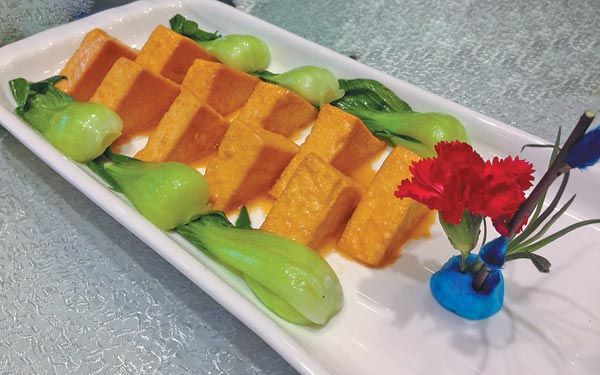 |
|
Bean curd. Photos by Pauline D. Loh / China Daily
|
Surprisingly, there was also a bean curd dish, with wedges of lightly deep-fried golden tofu served with a savory sauce. I also liked the fruit pilaf, a fragrant platter of rice garnished with dried apricots, raisins, almonds and walnuts.
On Zhang's recommendation, we opened a bottle of pomegranate wine. It was as good as the food and an ideal match for the flavors on the table. Pomegranates are abundant in Xinjiang, but the variety grown there is very thin-skinned and does not travel well. They have certainly found good use for the fruit.
The wine is sweet but not cloying, and scented with the desert roses grown in Xinjiang. It was an excellent aperitif that lasted throughout the meal, cleansing the palate after every dish.
Ruxian Guli has a little display area near the reception that shows off Xinjiang products, such as the gigantic Hetian Chinese jujubes that are larger than walnuts.
Rose raisins, sultanas, walnuts and almonds are also sold, and in season, the restaurant brings in such fruits as candy-heart apples and tiny pale, sweet apricots.
IF YOU GO:
Ruxian Guli Xinjiang Cuisine
27, Guangqumen Neidajie, 3/F, Dingxin Building (400 m from Guangqumennei West Bridge) 010-87103578
Average cost per head: 100-200 yuan
Recommended: Lamb Kebabs, Braised Ox Trotter, Roasted Snow Lake Fish, Baked Lamb and Onion Buns, Ruxian Guli House Salad, Fruit Pilaf.
We recommend:
